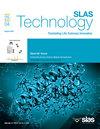CirnetamorNet: An ultrasonic temperature measurement network for microwave hyperthermia based on deep learning
IF 3.7
4区 医学
Q3 BIOCHEMICAL RESEARCH METHODS
引用次数: 0
Abstract
Objective
Microwave thermotherapy is a promising approach for cancer treatment, but accurate noninvasive temperature monitoring remains challenging. This study aims to achieve accurate temperature prediction during microwave thermotherapy by efficiently integrating multi-feature data, thereby improving the accuracy and reliability of noninvasive thermometry techniques.
Methods
We proposed an enhanced recurrent neural network architecture, namely CirnetamorNet. The experimental data acquisition system is developed by using the material that simulates the characteristics of human tissue to construct the body model. Ultrasonic image data at different temperatures were collected, and 5 parameters with high temperature correlation were extracted from gray scale covariance matrix and Homodyned-K distribution. Using multi-feature data as input and temperature prediction as output, the CirnetamorNet model is constructed by multi-head attention mechanism. Model performance was evaluated by analyzing training losses, predicting mean square error and accuracy, and ablation experiments were performed to evaluate the contribution of each module.
Results
Compared with common models, the CirnetamorNet model performs well, with training losses as low as 1.4589 and mean square error of only 0.1856. Its temperature prediction accuracy of 0.3 °C exceeds that of many advanced models. Ablation experiments show that the removal of any key module of the model will lead to performance degradation, which proves that the collaboration of all modules is significant for improving the performance of the model.
Conclusion
The proposed CirnetamorNet model exhibits exceptional performance in noninvasive thermometry for microwave thermotherapy. It offers a novel approach to multi-feature data fusion in the medical field and holds significant practical application value.
基于深度学习的微波热疗超声测温网络
目的微波热疗是一种很有前景的癌症治疗方法,但准确的无创温度监测仍然具有挑战性。本研究旨在通过对多特征数据的有效整合,实现微波热疗过程中温度的准确预测,从而提高无创测温技术的准确性和可靠性。方法提出一种改进型递归神经网络结构,即CirnetamorNet。利用模拟人体组织特性的材料构建人体模型,研制了实验数据采集系统。采集不同温度下的超声图像数据,从灰度协方差矩阵和Homodyned-K分布中提取温度相关性较高的5个参数。以多特征数据为输入,温度预测为输出,采用多头注意机制构建CirnetamorNet模型。通过分析训练损失,预测均方误差和精度来评估模型的性能,并进行烧蚀实验来评估每个模块的贡献。结果与常用模型相比,CirnetamorNet模型表现良好,训练损失低至1.4589,均方误差仅为0.1856。其温度预测精度为0.3°C,超过了许多先进的模型。烧蚀实验表明,去掉模型的任何一个关键模块都会导致性能下降,这证明了各个模块的协作对于提高模型的性能是非常重要的。结论所提出的CirnetamorNet模型在微波热疗的无创测温中表现出优异的性能。它为医学领域的多特征数据融合提供了一种新的方法,具有重要的实际应用价值。
本文章由计算机程序翻译,如有差异,请以英文原文为准。
求助全文
约1分钟内获得全文
求助全文
来源期刊

SLAS Technology
Computer Science-Computer Science Applications
CiteScore
6.30
自引率
7.40%
发文量
47
审稿时长
106 days
期刊介绍:
SLAS Technology emphasizes scientific and technical advances that enable and improve life sciences research and development; drug-delivery; diagnostics; biomedical and molecular imaging; and personalized and precision medicine. This includes high-throughput and other laboratory automation technologies; micro/nanotechnologies; analytical, separation and quantitative techniques; synthetic chemistry and biology; informatics (data analysis, statistics, bio, genomic and chemoinformatics); and more.
 求助内容:
求助内容: 应助结果提醒方式:
应助结果提醒方式:


